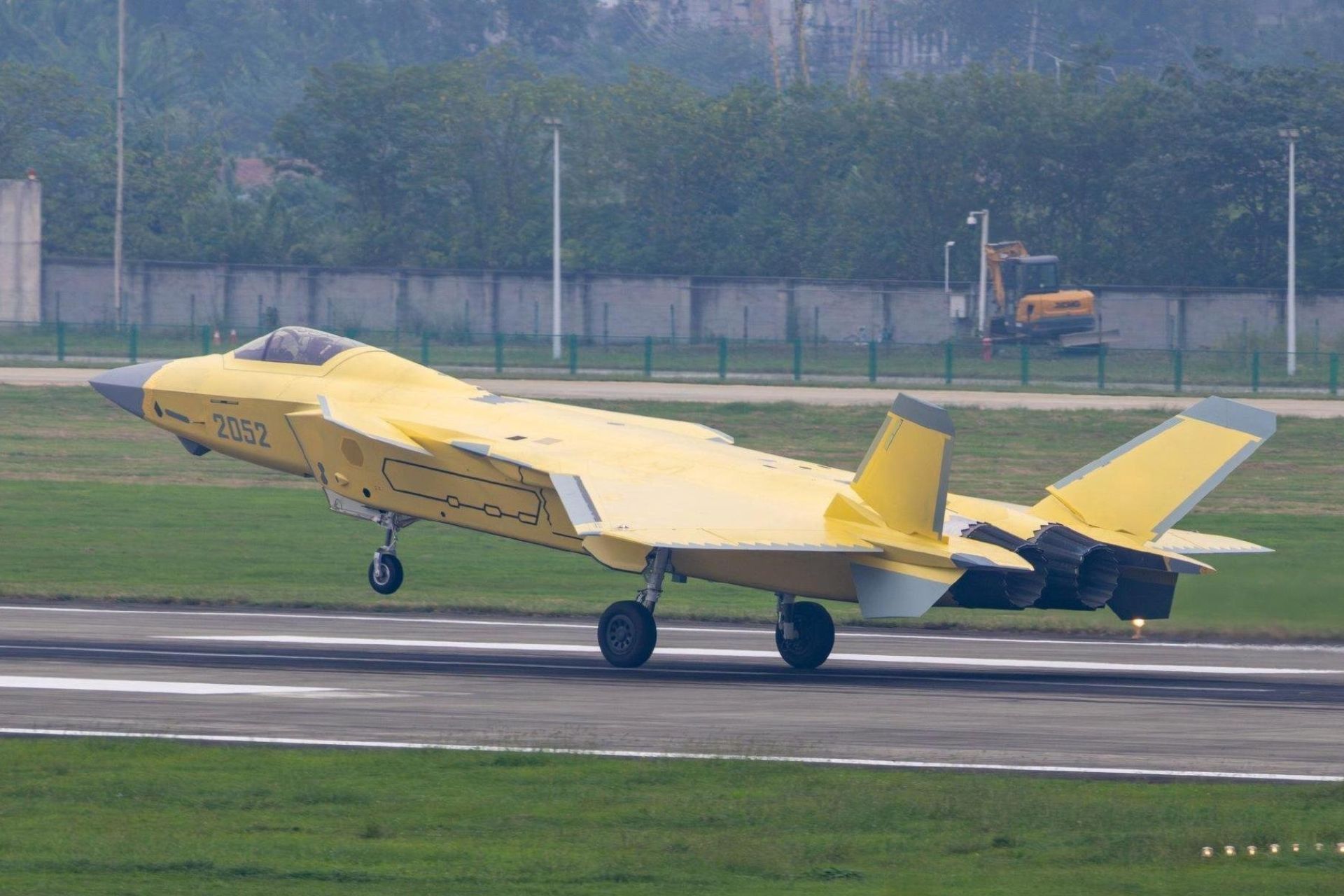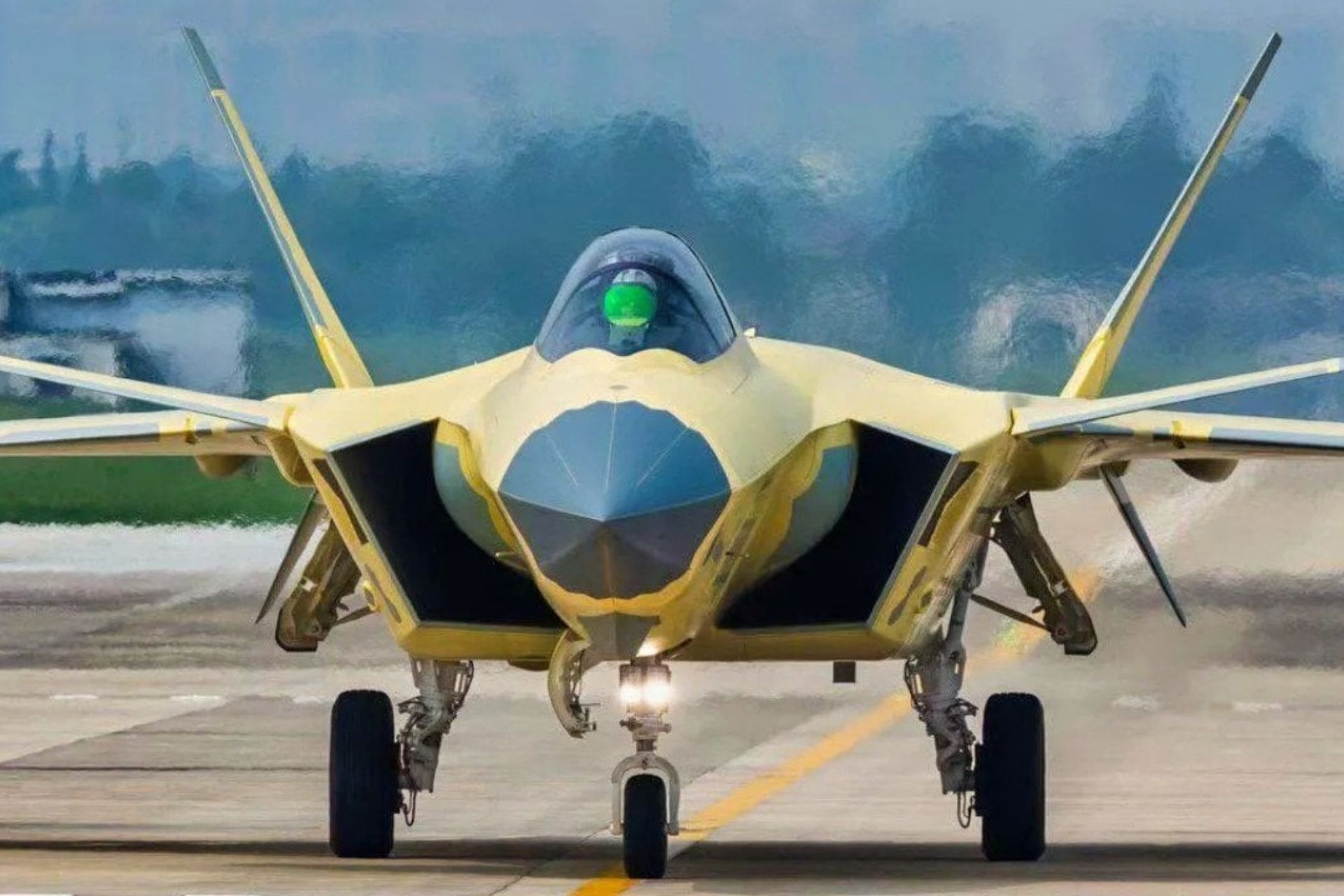Breaking News
First Images of J-20A Stealth Fighter Prototype Equipped with WS-15 Engine.
The development of domestic aircraft engines has long been considered a weakness of China's aerospace industry. For decades, the People's Liberation Army (PLA) fighter jets were primarily powered by engines derived from Soviet or Russian designs or produced under license. However, China's economic, industrial, and military rise has enabled its aerospace industry to advance and develop its own engines. These engines now equip the main fourth and fifth-generation combat aircraft. The most recent example is the emergence of the clearest photograph to date of a J-20A stealth fighter, equipped with the new WS-15 engine.
Follow Army Recognition on Google News at this link

The J-20A variant in the photograph features several improvements over previous versions, including a redesigned radome and a slightly elevated cockpit (Picture source: X Channel RupprechtDeino )
Although many specifications of the Xian WS-15 turbofan remain unknown, its development dates back to the 1990s and is directly linked to the fifth-generation J-20 fighter, which is in service with the PLA Air Force (PLAAF). Due to technological limitations in China's aerospace industry at the time, the J-20 was initially powered by Russian Saturn AL-31 engines. Later, as mass production of the "Mighty Dragon" stealth fighter began, locally produced WS-10 engines were integrated into the aircraft, which were initially designed for fourth-generation Chengdu J-10 fighters. However, China aimed to equip its air superiority fighter with an engine capable of meeting the stealth requirements, comparable to the capabilities of the American F-22 Raptor.
The Chengdu J-20, also known as the "Mighty Dragon," is a fifth-generation stealth fighter developed by Chengdu Aerospace Corporation for the People's Liberation Army Air Force (PLAAF). Its development began in the late 1990s, with the first prototype unveiled in 2011. The aircraft entered service in 2017 and is primarily designed for air superiority, though it is also capable of conducting ground-attack missions. The J-20 stands out for its stealth characteristics, advanced avionics, and the ability to carry a mix of air-to-air and air-to-ground weaponry in internal bays to maintain a low radar signature.
By 2023, China is estimated to have around 150 to 200 operational J-20 fighters, making it one of the few countries with an operational fifth-generation fighter fleet, alongside the United States and Russia. The J-20's capabilities include long combat range, advanced radar systems, and enhanced maneuverability. Its development reflects China's ambition to match Western air power, particularly in contested areas like the South China Sea.
These long-term efforts have resulted in the creation of the Xian WS-15 engine, which now powers more recent versions of the J-20, produced by Chengdu Aerospace Corporation. In recent months, several reports have indicated the start of production of this new turbofan engine, along with flight tests conducted with fifth-generation aircraft.

The WS-15 engine requires modified air intakes to optimize airflow. In terms of power, prototypes have indicated that the engine could reach a thrust of 36,000 pounds with afterburners, with the goal of reaching 40,000 pounds (Picture source: CreativeCommons)
Recently, a photograph of a J-20A (serial number 2052) equipped with WS-15 engines circulated on social media, drawing the attention of OSINT (Open Source Intelligence) analysts and experts. This image, the clearest ever seen, shows the aircraft in great detail. Although the location of this test flight has not been confirmed, it is likely to have taken place at Chengdu's facilities.
The J-20A variant in the photograph features several improvements over previous versions, including a redesigned radome and a slightly elevated cockpit. The fuselage also appears more spacious, which may suggest the integration of new avionics equipment and increased fuel capacity.
The WS-15 engine requires modified air intakes to optimize airflow. In terms of power, prototypes have indicated that the engine could reach a thrust of 36,000 pounds with afterburners, with the goal of reaching 40,000 pounds. In comparison, the WS-10 produced thrusts ranging from 32,000 to 35,000 pounds with afterburners. It is noteworthy that while the WS-10 has been observed with thrust-vectoring nozzles, this feature has not yet been confirmed for the WS-15.
If these data are accurate, the J-20A powered by the WS-15 could offer greater power than American F-22 Raptors, whose Pratt & Whitney F119 engines each provide 35,000 pounds of thrust.
This development, while raising new questions, reflects decades of Chinese investment in the research and production of aircraft engines. Recent photographs suggest that another J-20A (serial number 2053) has been seen flying, also apparently equipped with WS-15 engines.


























